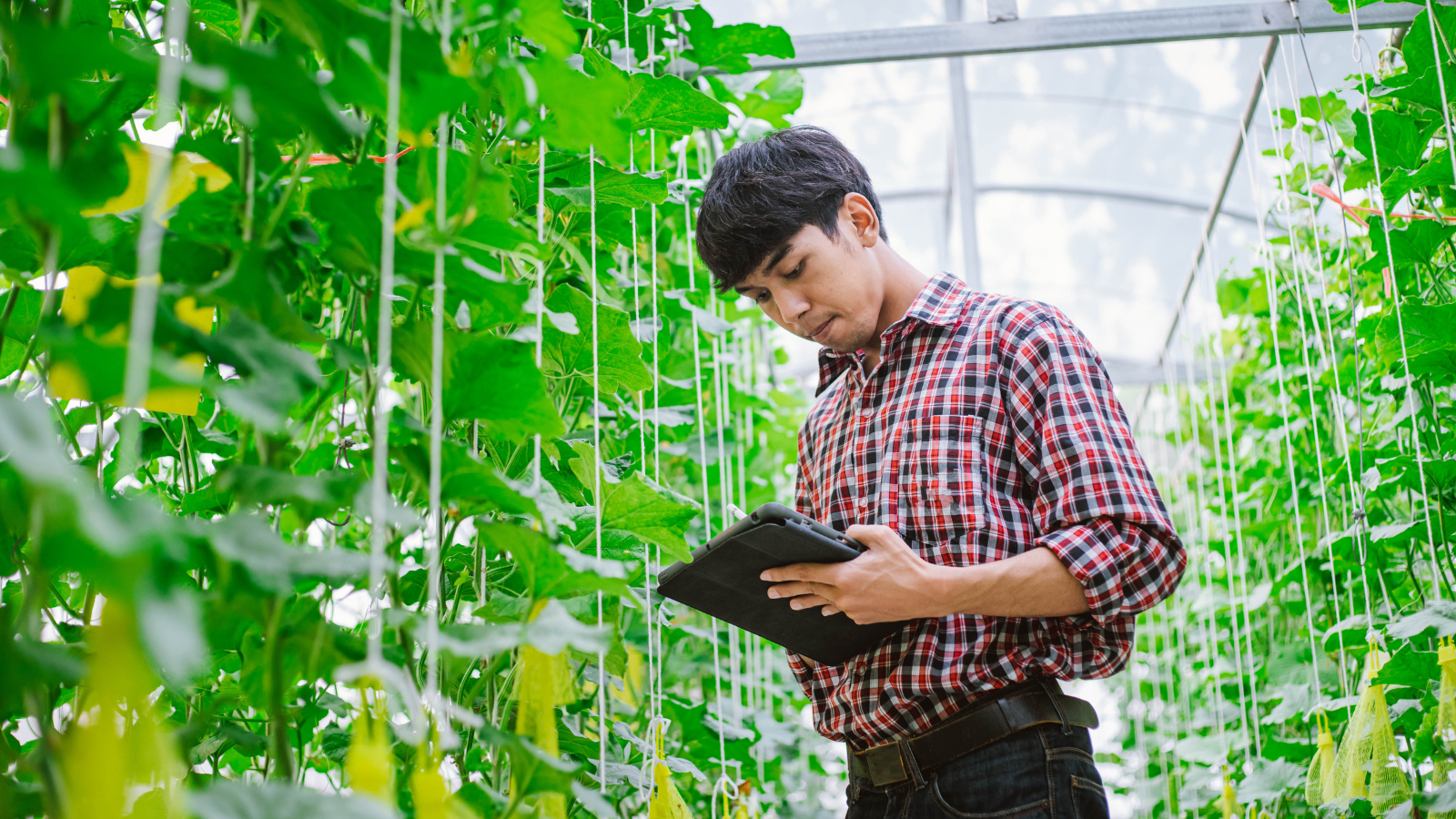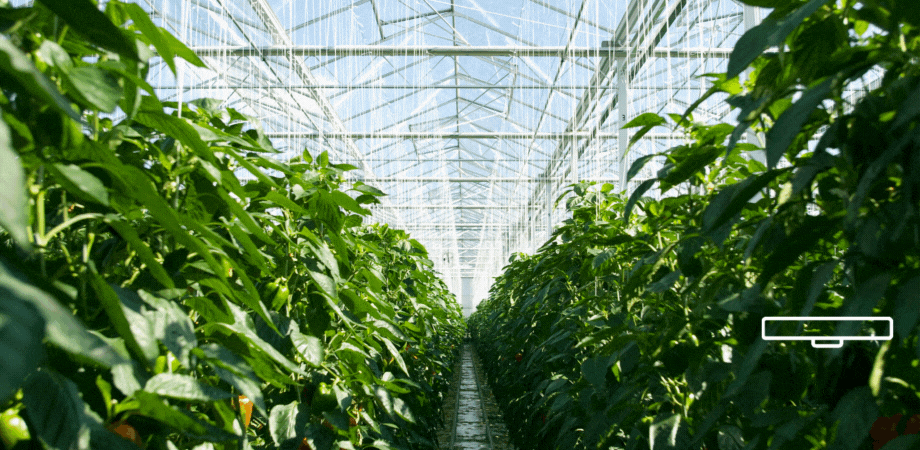Written independently by Gordon Gee, Caliponics UK. Visit caliponics.co.uk
There has been some recent debate about the advantages of CO2 misting in hydroponics. This has mainly been driven by developments in CO2 delivery together with scientific studies to prove or disprove the efficacy of such processes on the outcome of the crop yield and quality during its growth phase and at harvest.
This can be a complex subject. This article examines both the science behind the technology, the delivery of the technology itself and the various advantages it brings to hydroponic growers as the end users, as ultimately it will be in their own court of opinion that this new technology will win or not.
The Science Behind CO2 Misting
All creatures live in a state of symbiotic unity with each other in terms of what they breathe in and what they breathe out. While all animals, humans included, breathe in oxygen (O2) and breathe out carbon dioxide (CO2), plants do the exact opposite during the day in that they take in CO2 from the air and give out O2 in a process called “photosynthesis”, which includes light and water. Of course, lots of other things happen as well, but that is the essence of it.
Normally the CO2 enters the plants through their stomata, small pores on the undersides of their leaves. The CO2 reacts with water inside the leaves and light to achieve the photosynthetic transformation which is normally written as:
6CO2 + 6H2O → C6H12O6 + 6O2.
This process separates CO2 and water (H2O) and then combines these into entirely new compounds. When concluded, the plant releases the residual O2 into the air, and the cycle will be complete. Meanwhile the C6H12O6, a glucose-like material, is used by the plant to grow its roots, shoots, leaves, flower and fruit.
In this way, the plant makes its own food. But the importance in agriculture and for the hydroponic grower lies in the fact that the plants will grow throughout their lives as long as they photosynthesize CO2, until (hopefully) they reach growth maturity and they produce an abundant yield at harvest. For all growers who have carefully and thoughtfully invested in their plants in various ways, that is the end goal.
The Intervention of New Technology
Of course, technology is always there to make improvements to what occurs in nature. In the CO2 misting technology delivered by CO2 Gro Inc. (co2gro.ca) there is both an enhancement in this process together with a reduction in the carbon footprint for those growers already using atmospheric CO2 gas enrichment. Their CO2 Delivery Solutions™ process is also claimed to increase yields by up to 30 percent compared to ambient conditions, while consuming 90% less CO2 gas than atmospheric enrichment needs to achieve similar results. So, let’s have a look at what’s happening.
The technology uses a CO2 Infusion System which dissolves and saturates carbon dioxide in water. This dissolved CO2 solution is then delivered to plants using carefully timed misting processes in the form of very fine droplets. Just a few seconds of misting per hour will provide the added CO2 needed for increased plant growth which is equivalent to maintaining a continuous CO2 supply in the air at greater than 800 ppm.


CO2 Infusion System at a hydroponic lettuce greenhouse.
Normally plants would absorb this CO2 through their stomata. But with this system, the fine misting creates a very thin film on the leaf surface which enables the CO2 to be absorbed by the entire leaf surface through diffusion, filling the leaf with CO2 which is used for enhancing photosynthesis.
The stomata are all located on the undersides of leaves for the normal CO2 uptake process, but the film of dissolved CO2 creates a diffusion gradient of high CO2 concentration in the film and lower CO2 concentration in the leaf. CO2 in the film moves across the leaf’s surface into the leaf through microscopic cracks in the cuticle, while the water remains on the leaf before drying off. This process is irrespective of the stomata, making overhead misting possible versus trying to mist from beneath the plant.
With an eye on the grower’s carbon footprint, it’s important to emphasize that the difference here is that the CO2 does not escape the growing area as it is entirely dissolved in the solution and is transported in the mist droplets, compared to CO2 in the air which escapes the growing area through air leaks and venting.
Using traditional CO2 gas enrichment methods, the gaseous CO2 will occupy much of the entire volume of the growing area, and during venting, this additional CO2 will be released into the atmosphere, which is just the kind of thing that we all need to avoid. However, with this new process, the CO2 mist targets the plant much more directly and remains within the plant as additional biomass, carbon being one of the essential plant foods responsible for rapid and robust growth. Thus, the grower is able to reduce their CO2 enrichment emissions (the amount of CO2 they normally lose to the atmosphere when enriching the air) by up to 90%.
The net result of the technology is that the plants will grow bigger with more CO2 available -despite spring, summer and fall venting. The two demonstrable effects of CO2 misting – far better plant growth and development together with a lessening of carbon emissions – are considered to be the two main advantages of CO2 misting in hydroponics.
Benefits and Drawbacks of CO2 Misting in Hydroponics
CO2 is an essential element of all plant growth, along with light and water. Higher levels of available carbon enable plants to develop faster as well as provide larger yields.
A research study by the University of Colorado found that nutrients including carbon, oxygen, potassium, phosphorous, hydrogen, sodium and sulphur can all be contained in carbonated water. In the study, carbonated water was used on some plants while ordinary tap water was used on a similar control batch of plants. Everything else being equal (such as light, temperature, humidity levels, etc.,) the researchers found that the plants which were treated with the carbonated water actually grew to as much as twice the size of the control plants treated with ordinary tap water. The carbonated water in this study was applied to the roots using drip irrigation. However, other studies show carbonated water to the roots to be inconclusive in their effect, as much of the benefits are affected by other conditions in the soil as well as the plant being grown. Plants take in and photosynthesize CO2 in their leaves, not the roots, which is why dissolved CO2 is best applied by misting the leaves as CO2 GRO’s technology has demonstrated.
The theory and scientific research are all very well. So how do the actual hydroponic growers find the results of dissolved CO2 misting?
From a variety of different sources, it seems that CO2 misting really does make plants grow up to 30 percent larger, and that this kind of natural treatment and growing method can be used as part of other innovations to help feed a world which is increasingly hungry. Also, the fact that this method enables plants to grow faster means that plant life cycles will be shorter and that harvests can be more frequent of a crop which consists of larger and more fruitful produce.
The only drawbacks seem to be those that stem from the success of the CO2 misting treatment! Because the results are much fuller, firmer and larger plants, growers may need to spend a little more time manicuring their plants. So long as there is a market for more of the plant’s product, more production means more revenue for growers and more food for our growing population.
In addition to more plant production, there is a good body of evidence to suggest that CO2 misting also saves your plants from issues caused by epiphytic microbial pathogens such as powdery mildew, other fungi and bacteria. This benefit is due to pH fluctuations on the plant surface whenever the dissolved CO2 is misted. Dissolved CO2 has a lower pH than normal water, therefore when the mist is applied, the pH on the plant surface drops. The CO2 in the film diffuses within 30 seconds to a minute, at which point the pH goes back to normal. This fluctuation throughout the day makes the environment unstable for microbial pathogens to replicate, reducing their spread to the rest of the plant and other plants in the grow room by up to 99%. Atmospheric CO2 enrichment alone does not provide this benefit.
Another consideration is that, if using soil-based growing techniques (which means it is outside the scope of hydroponics), some CO2 mist may fall on the soil and, if excessive, could possibly alter the pH of the soil to undesirable levels. Though the amount of mist being applied is little, in rare cases it may affect the soil. Which is all the more reason to switch to hydroponics!
CO2 Misting and the Future of Hydroponics
Various studies have found that some plants are more responsive to CO2 misting than others, while some plants benefit a huge amount from this method. So every grower, much as before, and very much in the tradition of horticulture in general, can at least try new methods and find out if they work for you. If they do, then continue with these and incorporate these new methods into your existing growing regime.

Technology Trial at a hydroponic lettuce greenhouse.
Most experienced growers will say that they’ve found their own “best methods” by their own experimentation, which may be just down to trial and error. But then again, this is the way that the hydroponics sector has advanced – through establishing what is best for a better yield and then sticking to it.
Incrementally, all these enhancements will inevitably add up to a massive improvement which the hydroponics sector can amply demonstrate.
The people at CO2 GRO can take heart that they have now become part of that journey. Of course, CO2 is already being used in the hydroponics sector with great results, and you can buy it in various forms from any good hydroponics supplies store or website.
But this new and improved method of CO2 delivery has already shown that it can produce far better results. The advantages of CO2 misting in hydroponics for large and medium sized commercial facilities can be seen both in terms of improved yields, therefore increased profits, as well as the environmental benefits that naturally follow from using this innovative and exciting technology.





